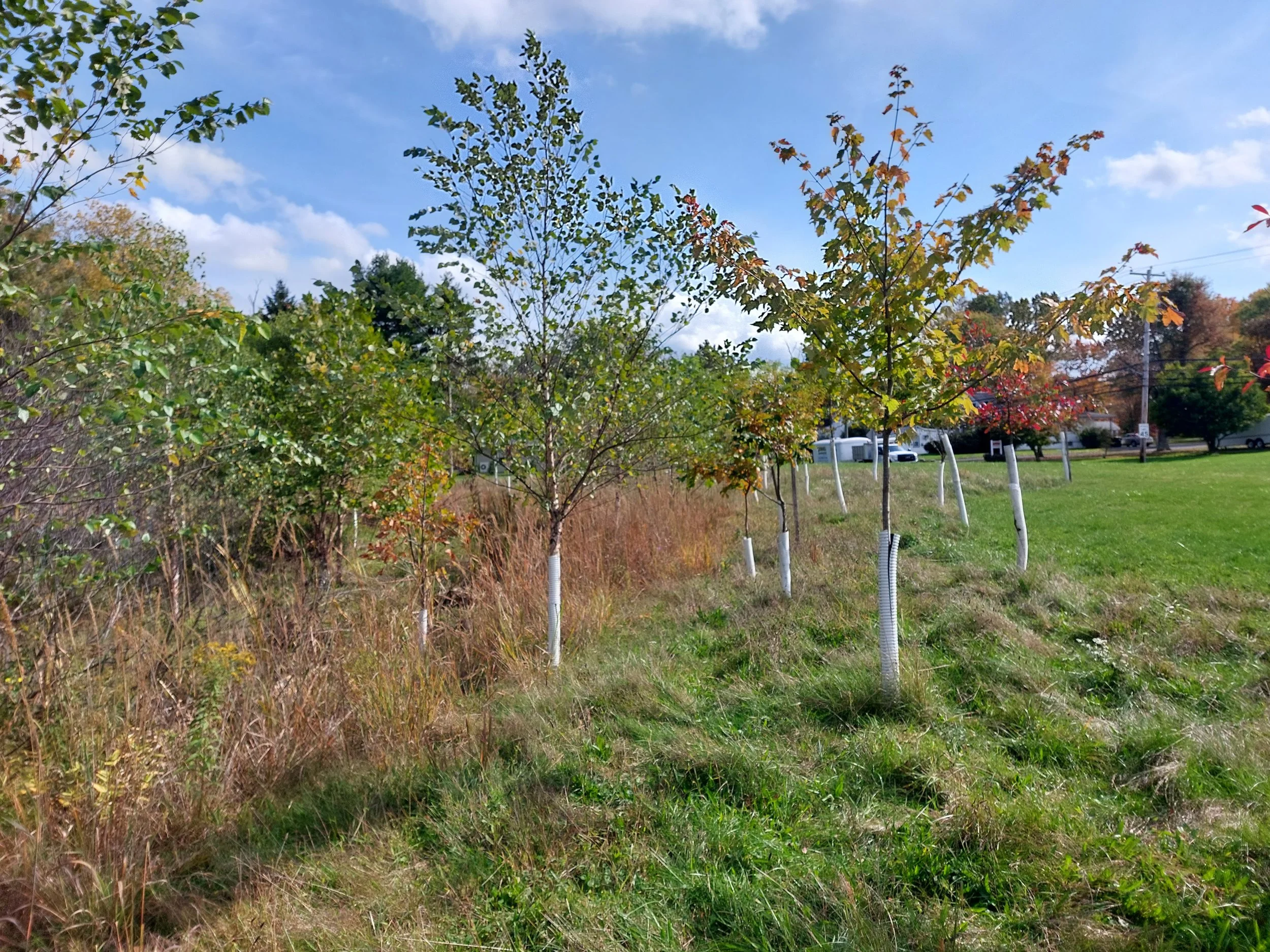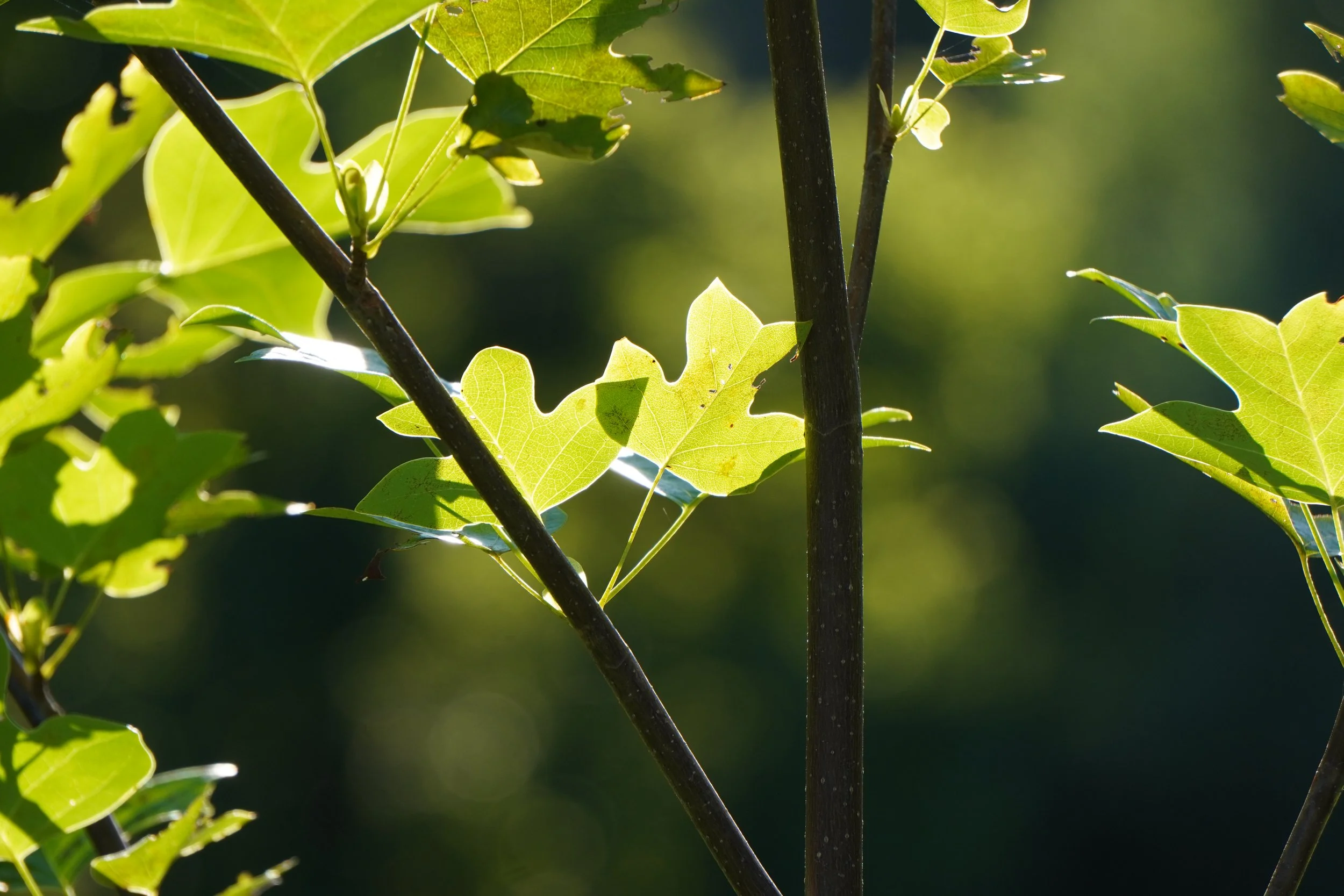
Riparian Buffers
Protect our local waterways
by planting and maintaining a riparian buffer!
What is a Riparian Buffer?
A riparian buffer is a vegetated area near a stream, creek, pond or lake that helps to shade and protect the waterway from nearby land uses. A forested buffer is essential for a healthy stream, providing vital habitat for wildlife and acting as a sponge to absorb polluted stormwater runoff before it can enter the stream.
Benefits of Riparian Buffers
Water Quality- riparian buffers help to improve the water quality of a stream or creek in the following ways:
Prevent pesticides, nutrients and sediments from entering the waterway which can be harmful to wildlife. Without a buffer, these pollutants would runoff the land, from parking lots, lawns or roads, and flow directly into the stream.
Stabilize the streambank and reduce erosion. Bank erosion can cause large amounts of sediment to enter a stream which can reduce reservoir capacity and be detrimental to wildlife.
Improved Habitat- riparian buffers provide the following habitat benefits:
Increased habitat area. Encouraging vegetated areas adjacent to streams and creeks provides vital habitat areas for wildlife, allowing them to easily access drinking water and food supplies.
Regulation of water temperature. Planting trees near streams provides shade which cools the water, improving habitat quality for aquatic species. Leaves and woody debris also provide food for fish and other organisms.
Economic Impacts- in addition to benefits for wildlife, riparian buffers also provide the following economic benefits:
Reduced water treatment costs. Much of the water we drink comes from local streams, creeks and reservoirs. Riparian buffers reduce the amount of pollutants entering these waterways, meaning less treatment is needed to make water drinkable.
Reduced costs associated with flood damage. Riparian buffers protect streamside properties from flooding because they are able to absorb more stormwater than lawns, pavement, or other impervious surfaces.
Designing your Riparian Buffer
When planning your buffer, it can be helpful to break your planting up into three zones, with zone 1 starting at the water's edge and zones 2 and 3 moving further inland. Each zone is designed to provide different benefits to the stream and should consist of certain plant species. Be sure to use native plants when designing and planting your buffer!
Zone 1- begins at water's edge and consists of large native trees and shrubs that can tolerate wet conditions.
Provides bank stabilization and shade for the stream.
Leaves, berries, and other organic material provide food and habitat for aquatic organisms.
Zone 2- next to zone 1, consists of a variety of native trees and shrubs.
Slows stormwater runoff which prevents erosion and recharges the groundwater supply.
Vegetation helps to absorb nutrients and pollutants carried by stormwater runoff.
Zone 3- next to zone 2 and the furthest inland, consists of native grasses and wildflowers.
Designed to slow and capture sediment, nutrients and other pollutants.
Caring for your Riparian Buffer
Early on, you will need to maintain your buffer regularly to ensure it functions properly. Once it is established, you will want to monitor it periodically and perform any necessary maintenance. Here are some common maintenance tasks you will need to keep in mind:
Watering your plants weekly when they are first planted and during droughts.
Weeding around the base of trees and shrubs and removing any invasive species. Do not use pesticides in riparian areas!
Mowing Zone 3 once or twice a year as needed to prevent overgrowth.
Protecting your plantings from deer browse and rub by using tree tubes or fencing.
Pruning any dead, dying or diseased branches from your trees and shrubs.
Other Resources
Want to learn more about riparian buffers and how to care for your plantings? Check out some of these helpful resources:
Perkiomen Watershed Conservancy - The Conservancy is your local resource for all things riparian buffer! Reach out to our Conservation Team with your riparian buffer questions or concerns.
Join the Conservancy for our annual riparian buffer plantings during Plant-A-Thon!Pennsylvania Horticultural Society- Tree Tenders
Pennsylvania Department of Conservation and Natural Resources- Forest Buffers along Waterways
Penn State Extension- Riparian Buffers: Pennsylvania's Best Solution for Protecting Its Waters
Penn State Extension- Riparian Buffers for Wildlife






